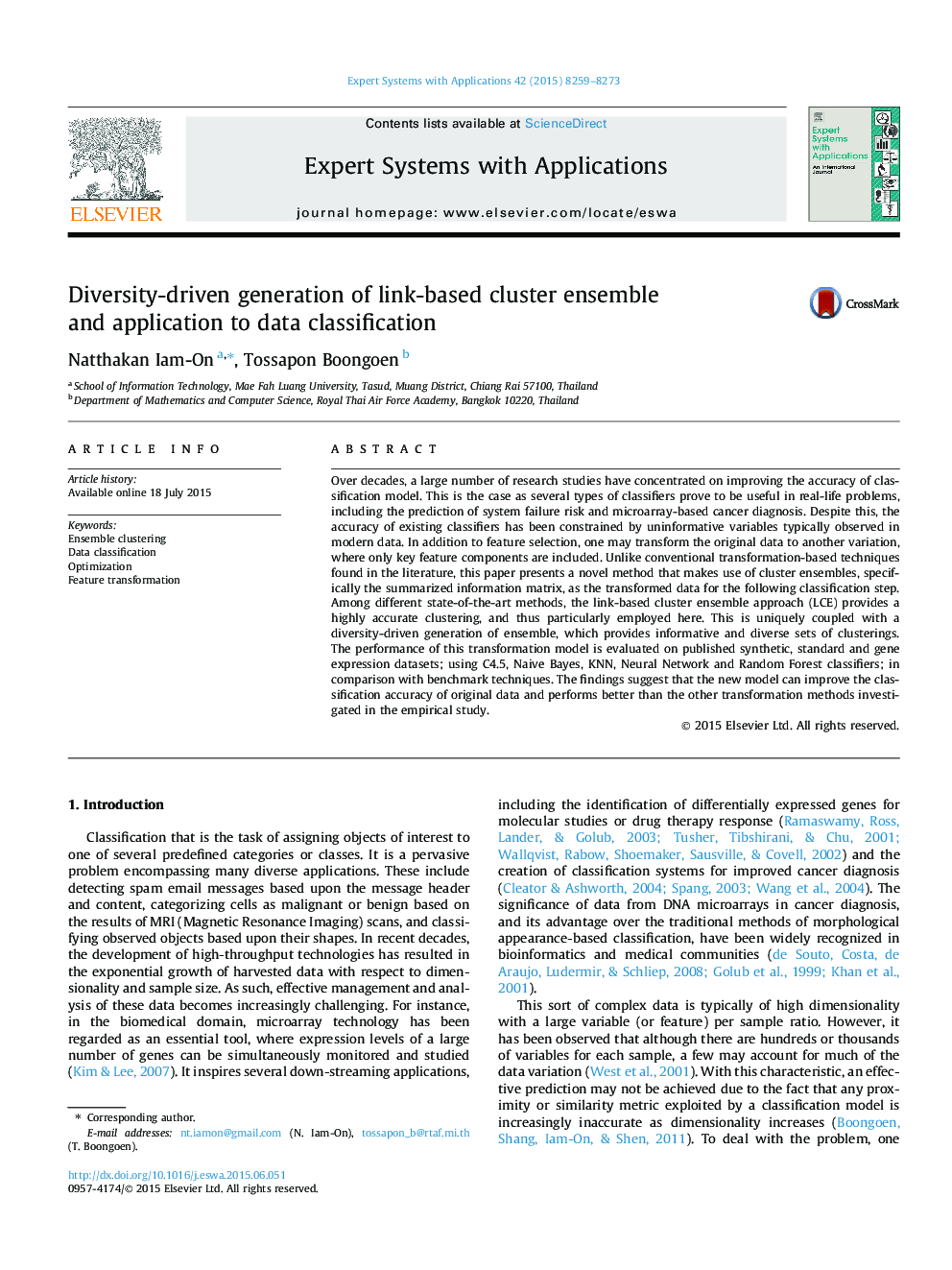| کد مقاله | کد نشریه | سال انتشار | مقاله انگلیسی | نسخه تمام متن |
|---|---|---|---|---|
| 10322298 | 660850 | 2015 | 15 صفحه PDF | دانلود رایگان |
عنوان انگلیسی مقاله ISI
Diversity-driven generation of link-based cluster ensemble and application to data classification
ترجمه فارسی عنوان
نسل مولد دسته بندی خوشه ای مبتنی بر پیوند و کاربرد در طبقه بندی داده ها
دانلود مقاله + سفارش ترجمه
دانلود مقاله ISI انگلیسی
رایگان برای ایرانیان
کلمات کلیدی
گروه خوشه بندی طبقه بندی داده ها، بهینه سازی، تحول ویژگی،
موضوعات مرتبط
مهندسی و علوم پایه
مهندسی کامپیوتر
هوش مصنوعی
چکیده انگلیسی
Over decades, a large number of research studies have concentrated on improving the accuracy of classification model. This is the case as several types of classifiers prove to be useful in real-life problems, including the prediction of system failure risk and microarray-based cancer diagnosis. Despite this, the accuracy of existing classifiers has been constrained by uninformative variables typically observed in modern data. In addition to feature selection, one may transform the original data to another variation, where only key feature components are included. Unlike conventional transformation-based techniques found in the literature, this paper presents a novel method that makes use of cluster ensembles, specifically the summarized information matrix, as the transformed data for the following classification step. Among different state-of-the-art methods, the link-based cluster ensemble approach (LCE) provides a highly accurate clustering, and thus particularly employed here. This is uniquely coupled with a diversity-driven generation of ensemble, which provides informative and diverse sets of clusterings. The performance of this transformation model is evaluated on published synthetic, standard and gene expression datasets; using C4.5, Naive Bayes, KNN, Neural Network and Random Forest classifiers; in comparison with benchmark techniques. The findings suggest that the new model can improve the classification accuracy of original data and performs better than the other transformation methods investigated in the empirical study.
ناشر
Database: Elsevier - ScienceDirect (ساینس دایرکت)
Journal: Expert Systems with Applications - Volume 42, Issue 21, 30 November 2015, Pages 8259-8273
Journal: Expert Systems with Applications - Volume 42, Issue 21, 30 November 2015, Pages 8259-8273
نویسندگان
Natthakan Iam-On, Tossapon Boongoen,
